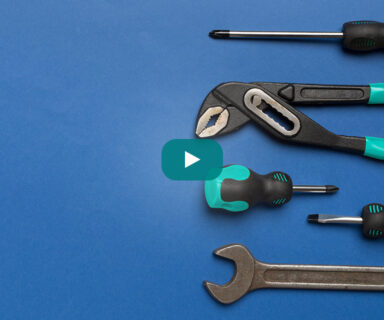 We’ve all been there – sent that promotional email with a word missing or realized your e-book has a formatting error after sharing it with your audience. It’s incredibly frustrating to have put so much work into something, only to have missed a simple mistake – and it could actually ruin a whole send.
We’ve all been there – sent that promotional email with a word missing or realized your e-book has a formatting error after sharing it with your audience. It’s incredibly frustrating to have put so much work into something, only to have missed a simple mistake – and it could actually ruin a whole send.
In addition to the personal annoyance these errors cause, they also have larger implications on your organization. Like death by a thousand papercuts, over time they can add up – making your company look a tad less professional and causing your audience to take note in bad ways. It’s probably extreme to go here, but what if your audience started to think that because you’ve got typos in your collateral, maybe your technology solution isn’t so bulletproof either?
Now, we know we’re never going to be error-free all of the time – even with the help of spellcheck we’re not going to catch every blooper – but we’ve found that, by building a review process and following it methodically, we can more consistently avoid common mistakes in our work. Here are a few practices we lean on that could be helpful to incorporate into your own work.
Separate editing from proofreading
While often conflated, editing and proofreading are two very different processes. When editing, you’re reviewing for structure, tone, clarity – substantive things. Proof reading reviews for spelling, grammatical inconsistencies and the like – gotchas. They cover very different issues. That’s why, to become a more perfect proofreader, it’s helpful to keep the two processes separate.
First comes editing – go through the piece and make your factual and stylistic changes. Personally, if it’s something I didn’t write, I like to do an initial read-through to “process” the asset as a comprehensive piece – the story arc, content and takeaways – before I really put on my editor’s hat. Unfortunately, editing is often when new errors are introduced, so it’s essential to fully wrap up this stage before moving on to the proofreading that gets a piece to “final.”
In an ideal scenario, if you’re performing both roles, you’ll take some time to create a clear break between editing and proofreading. This important discipline helps your mind reset itself – essentially letting it forget what you’ve already read. This protects you from glossing over errors you’ve already seen and “fixed” (in your brain) but not yet implemented on paper. A short walk, working on a different project, or even getting up to make a cup of coffee can all work well.
Lean on your style guide
Errors aren’t the only thing that can make your work look unprofessional – little things, like using em- and en-dashes interchangeably, can create micro-negative perceptions. This is where having a documented style guide to refer to can help keep you on top of all the little things. Your style guide serves as a single source of truth for all things style and grammar at your organization – it saves you from having to remember if using one or two spaces after a period is the way to go (one space is now the accepted norm)!
If your organization doesn’t have a style guide, now might be the time to make the case for one – or begin building it yourself. Most such documents, including ours at TechTarget, are evolutions on commonly available classics such as the Chicago or Associated Press (AP) standards. You may want to choose one guide as a starting point and then call out areas where your brand’s style diverges from it. Be sure to add in common terms from your industry and advice for colleagues on how you will use them. For example, do you use an industry acronym in the first instance or should you spell out the word and put the acronym after it in parentheses?
Have a clear process
Depending on the size of your team, your drafted content might go through a few sets of hands before reaching its final form. We find this process critical to achieving our quality goals because having another set of eyes helps to ensure core content expectations, structure and clarity. Of course, this process can also increase the chance of inconsistencies creeping in.
In our team, our content is created by a writer, who then hands it off to an editor, who then hands it back to the writer. In this process, the writer is responsible for final edits and review. In a larger organization you may have a proofreader as the final person in the process. Whatever your own process, it’s essential everyone involved knows their role and responsibilities, particularly who is responsible for the output at the “end of the line.”
Slow it down
When we miss mistakes, it’s not because we’re lazy or stupid. It’s because our brains have learned to make predictions and assumptions about what word or piece of information will follow.
Case in point: Read this sentence: “Yuo cna porbalby raed tihs esaliy desptie teh msispeillgns.”
This brain skill is super helpful when we’re reading quickly, but it negatively impacts editing because it can cause us to miss obvious problems. If you find that you’re glossing over words, or even sentences, try reading the paragraph out loud. By doing so, you’ll be forced to slow down – literally taking it word by word – which helps to catch errors and check sentence structure and flow. Sometimes it helps to read or analyze a particular sentence backwards – to check that everything works.
There are many more handy aids that can help you in your copyediting. Choose a handful that you will use. The key to increasing success and decreasing errors is to actually put a rigorous process in place and stick to it. Never forget that we make mistakes most often when we’re rushed. So, even with urgent projects, follow a good editing process and then take the necessary time out to proofread effectively.



